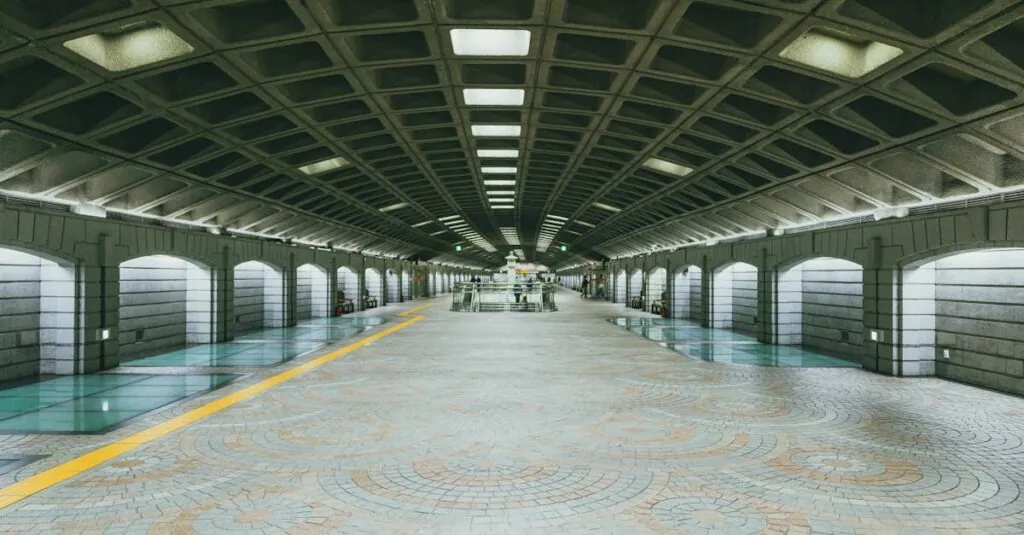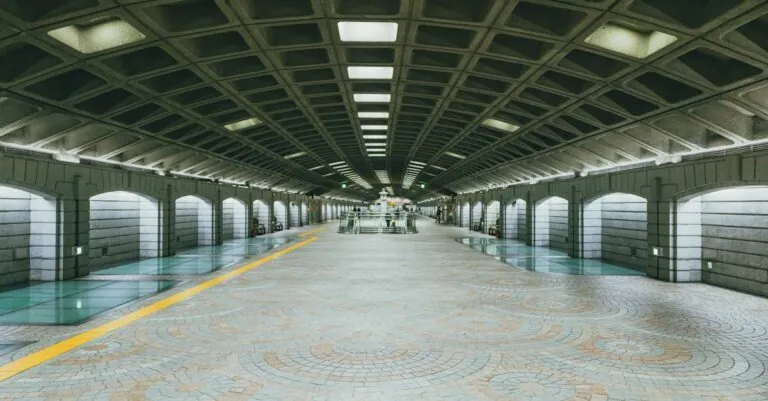In a world where attention spans are shorter than a cat video, animated transitions are the secret sauce to keeping viewers glued to their screens. These delightful little animations don’t just add flair; they guide the eye and create a seamless flow that transforms ordinary content into a captivating experience. Think of them as the confetti at a party—who doesn’t love a little extra sparkle?
Whether it’s a slick slide or a playful bounce, animated transitions can elevate presentations, websites, and videos from bland to grand. They’re not just for the pros; even the most novice creators can harness their power to impress. So, buckle up and get ready to explore how these dynamic effects can take your projects to the next level, making them not just seen but truly unforgettable.
Table of Contents
ToggleWhat Are Animated Transitions?
Animated transitions refer to the visual effects that occur when one element replaces another in a digital environment. These effects smooth the change from one screen to the next, enhancing user experience.
Definition of Animated Transitions
Animated transitions involve dynamic movements and changes in opacity, size, or position. They guide viewers’ eyes, providing clear cues as content shifts. Examples include fading, sliding, and zooming effects. Featuring in various media, from websites to slideshows, these transitions create a sense of continuity. Developers and designers frequently implement them to add flair and polish to projects.
Importance in Design
In design, animated transitions play a crucial role in engaging users. Attention spans are short; effective transitions capture interest and guide focus. Well-timed animations help prevent jarring cuts between content pieces. Designers observe that smooth transitions contribute to a cohesive narrative flow. Additionally, they aid in establishing brand identity through consistent visual language. With enhanced usability, animated transitions promote user retention and satisfaction.
Types of Animated Transitions
Animated transitions come in various types, each serving a specific purpose in enhancing visual storytelling.
Fade Transitions
Fade transitions offer a smooth, gradual shift between elements. Content slowly appears or disappears, creating a sense of elegance and softness. They effectively guide viewers through changes, allowing for seamless storytelling. Designers often use fade transitions for text elements or images, providing an understated effect that maintains focus on the content. This type of transition works well in presentations and videos where subtleness is key. Overall, fade transitions contribute to visual appeal without overwhelming viewers.
Slide Transitions
Slide transitions introduce a dynamic movement from one element to another. Content enters from one side while the previous element exits in the opposite direction. This effect maintains a sense of flow and continuity, capturing attention as elements interact. Designers frequently apply slide transitions in user interface designs, especially in navigational menus or galleries. The quick, energetic nature of this transition keeps viewers engaged and provides clear directional cues. Consequently, slide transitions enhance usability by making content changes intuitive.
Scale Transitions
Scale transitions modify the size of elements to create emphasis and depth. When an element increases in size, it draws attention immediately, while a decrease creates a sense of retreat. This technique works well for highlighting key information or guiding users to significant actions. Designers use scale transitions often in app interfaces and promotional animations. The visual variance maintains user interest and enhances the overall narrative. As a result, scale transitions help to prioritize content effectively.
Other Common Transition Types
Several additional transition types exist, each with unique effects. These include flip, wipe, and 3D transitions, which add creativity to visual storytelling. Flip transitions rotate elements, while wipe transitions reveal changes as if a curtain is drawn. 3D transitions provide depth, creating immersive experiences. Designers often choose these options for animations that require a stronger visual impact or to convey dramatic shifts. Therefore, understanding various transition types allows creators to select the most effective methods for their projects.
Benefits of Using Animated Transitions
Animated transitions enhance digital experiences by making interactions smoother and more engaging. These effects truly enrich user interactions in several key ways.
Enhancing User Experience
Animated transitions improve user experience significantly. They create a fluid flow between elements, preventing abrupt changes that can confuse viewers. When a user navigates from one part of a site to another, a well-timed animation eases the shift, keeping them focused and engaged. For example, elements that fade or slide into view provide reminders of the previous context, reinforcing familiarity. Users appreciate visual cues that make digital content feel responsive and intuitive.
Guiding User Attention
Guiding user attention remains essential in digital design. Animated transitions serve as visual indicators, directing the viewer’s gaze to important elements on the screen. They can highlight calls to action or new features, ensuring viewers recognize what matters most. For instance, using a scale transition draws focus to a key piece of information, making it impossible to overlook. This method of engagement keeps users involved and encourages them to explore further.
Creating Visual Cohesion
Visual cohesion plays a crucial role in branding and design consistency. Animated transitions contribute to a seamless narrative that ties various elements together, creating a unified experience. Designers utilize matching transition styles to keep visual language consistent across platforms. For instance, consistent fading effects promote a cohesive feel on a website or presentation. Overall, animated transitions strengthen design components, reinforcing brand identity and facilitating smoother interactions.
Best Practices for Implementing Animated Transitions
Implementing animated transitions effectively enhances user experience, ensuring clarity and engagement. Following best practices makes transitions an asset rather than a distraction.
Keeping It Subtle
Subtle transitions prevent overwhelming users. Animations should complement the content rather than dominate it. Too much movement can create confusion, which detracts from the overall message. Choose animations that enhance focus on key elements without drawing unnecessary attention. For example, using a gentle fade can lead viewers’ eyes seamlessly from one aspect to another, maintaining interest without causing chaos.
Ensuring Responsiveness
Responsive design ensures transitions look great on all devices. Test animations across different screen sizes to maintain visual integrity. Viewers expect a smooth experience when interacting, regardless of whether they are on desktops or smartphones. Implementing responsive animations provides consistency and boosts usability. Use CSS media queries to adapt animations based on the user’s device specifications and capabilities.
Timing and Duration Considerations
Timing plays a crucial role in the effectiveness of animated transitions. Transitions should align with user interactions to create a natural feel. A duration of 300 milliseconds often provides a balance, allowing enough time for users to perceive change without feeling sluggish. Timing adjustments may be necessary based on the complexity of the animation, but maintaining a consistent pace enhances clarity. Prioritizing these timings allows smooth transitions to improve overall flow and user satisfaction.
Animated transitions are more than just eye-catching effects; they’re essential tools for enhancing user experience in digital design. By creating a smooth flow between elements, they guide viewer attention and maintain engagement. The right transition can elevate content presentation and reinforce brand identity, making it memorable.
As designers explore various types of animated transitions, understanding their unique purposes allows for more effective storytelling. Implementing best practices ensures these animations serve their intended function without overwhelming the audience. Ultimately, embracing animated transitions can significantly enrich digital interactions, paving the way for more cohesive and engaging user experiences.




